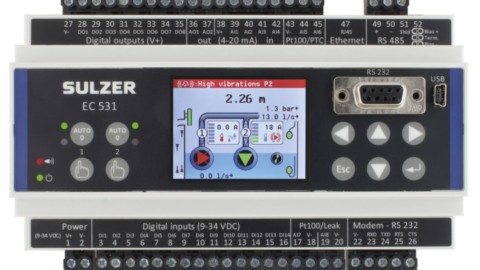New technology from Monash University addresses the issue of energy-intensive, conventional approaches to seawater desalination and wastewater recycling, achieving almost 100 per cent salt removal through solar power.
Researchers at Monash University developed energy-passive technology that’s able to deliver clean, potable water to thousands of communities, simply by using photothermal materials and the power of the sun.
Currently conventional methods of water treatment use about three per cent of world’s energy supply.
Led by Professor Xiwang Zhang from Monash University’s Department of Chemical Engineering, researchers have developed a robust solar steam generation system that achieves efficient and continuous clean water production from salty water.
Through precisely controlling salt crystallisation only at the edge of the evaporation disc, this novel design also can harvest the salts.
The feasibility and durability of the design have been validated using seawater from Lacepede Bay in South Australia. The technology presents a promising solution to water shortages in regional areas where grid electricity isn’t available.
“Water security is the biggest challenge the world faces in the 21st century, especially as population grows and the effects of climate change take shape. Developing and under-resourced communities feel the effects of these factors the most,” Professor Zhang said.
“Utilising solar energy for water treatment has been widely considered as one of the sustainable solutions towards addressing the scarcity of clean water in some communities, without sacrificing our environment or resources.
“Despite the significant progress achieved in material development, the evaporation process has been impeded by the concentration of salt on the surface, which affects the quality of water produced.”
Researchers created a disc using super-hydrophilic filter paper with a layer of carbon nanotubes for light absorption. A cotton thread, with a 1mm diameter, acted as the water transport channel, pumping saline water to the evaporation disc.
The saline water is carried up by the cotton thread from the bulk solution to the centre of the evaporation disc. The filter paper traps the pure water and pushes the remaining salt to the edges of the disc.
The light absorbance was measured to 94 per cent across the entire solar spectrum. The disc also exhibited a rapid temperature increase when exposed to light in both dry and wet states, rising from 25℃ to 50℃ and 17.5℃ to 30℃ respectively within one minute.
This technology also has great potential in other fields, such as industry wastewater zero liquid discharge, sludge dewatering, mining tailings management and resource recovery. Future studies will look to extend the technology to these applications with industry support.
“Our study results advance one step further towards the practical application of solar steam generation technology, demonstrating great potential in seawater desalination, resource recovery from wastewater, and zero liquid discharge,” Professor Zhang said.
“We hope this research can be the starting point for further research in energy-passive ways of providing clean and safe water to millions of people, illuminating environmental impact of waste and recovering resources from waste.”

















